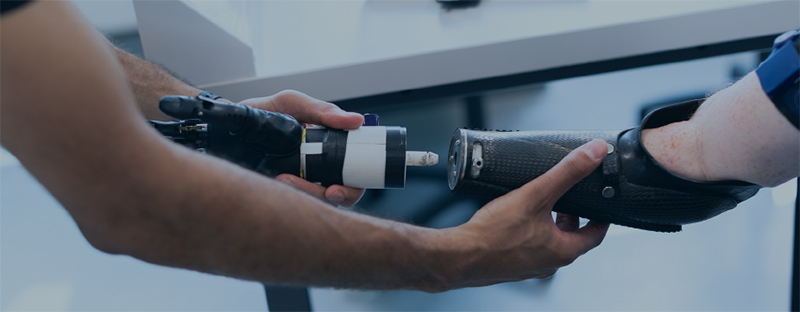Laparoscopic Applications Highlight the Trends in Medical Robots Industry

Breakthrough technologies like robotics and AI have been demonstrating potential to address many common issues in the modern healthcare industry. Often considered synonymous with surgical robots, which are a dominant application for robotics in healthcare, medical robots are being used in many other care delivery and hospital management operations. Advanced medical robotic systems are capable of executing several tasks, from complex surgical procedures to personal care, medicine dispensing, clinical training and more.
Used mainly for tasks that involve monotonous and repetitive work, the integration of machine learning in healthcare has also contributed to the burgeoning popularity of medical robots in recent years. According to a report by Global Market Insights, Inc. (GMI) the global medical robots market size could exceed $22.1 billion by 2027.

Robot-assisted Laparoscopic Surgeries Emerge as Key Minimally Invasive Solutions
Over the past two decades, minimally invasive surgery, or MIS has established itself as a highly sought-after surgical alternative to conventional open surgery in many cases, owing to medical advantages like smaller incisions and faster recovery times. There are various types of MIS solutions, which involve small incisions through which minuscule cameras and instruments are inserted to perform the surgical procedure.
Laparoscopy, in particular, has gained rapid prominence as a commonly executed minimally invasive surgical technique, providing benefits such as fewer complications post-operation, reduced surgical risk, and accelerated patient recovery. One of the major drivers behind the growing preference for laparoscopic procedures in recent years is the gradual shift of the healthcare sector away from open surgeries.
Despite growing interest, however, conventional minimally invasive surgical procedures face certain limitations. These include loss of force- and touch-related sensations, which are essential for surgical accuracy, restriction of movement dexterity due to limited instrument mobility, and the risk of physiological tremors, which can be transmitted to the operating field by the rigid laparoscopic equipment.
Robotic surgery systems, especially robot-assisted laparoscopic surgeries, can be a solution to these challenges and are expected to transform the way minimally invasive surgeries are performed. Based on GMI estimates, the medical robots market share from the laparoscopic application segment held a valuation of nearly $2.51 billion in 2020.
Robot-assisted surgery holds certain similarities to traditional laparoscopic procedures, vis-à-vis use of high-definition, 3-D imaging for magnification of the surgical site, high-tech cameras, and reliance on small incisions. Despite these similarities, robot-assisted laparoscopic surgeries possess a certain edge over their conventional counterparts. These systems do not require surgeons to scrub in at the patient’s side, but rather allow them to operate the laparoscopic instruments via robots, using a separate console in the operating room.
In January 2021, TransEnterix, Inc., a pioneer in digitization of the interface between surgeons and patients in MIS, announced the CE Mark approval for its Intelligent Surgical Unit, which is designed to enhance the machine vision proficiency of the Senhance Surgical System. Through this approval, Senhance digital laparoscopic programs gained access to the novel technology, bringing them to the fore in terms of augmented intelligence-powered surgical innovation.
Likewise, in February 2021, CMR Surgical collaborated with LifeHealthcare to introduce its Versius Surgical Robotic System into the Australian market. Following its launch, Sydney-based Macquarie University Hospital became the first to utilize the system after its approval by the Australian TGA (Therapeutic Goods Administration) in late 2019, which authorized the Versius system for use in a vast array of laparoscopic procedures.
COVID-19 Underpins the Need for Telemedicine Robots for Care Delivery Optimization
The ongoing coronavirus pandemic has brought along several unprecedented threats and burdens to the global healthcare industry. These challenges are manifesting in numerous forms, most prominently the high risk posed to frontline healthcare workers battling the pandemic.
Among the many types of robotics in healthcare, telemedicine robots, or telepresence robots, have been gaining rapid momentum. A notable example is a collaborative effort undertaken by Boston Dynamics, Brigham and Women’s Hospital, MIT, and others, to develop a robotic solution for the measurement of patient vital signs, reducing frontline healthcare workers’ vulnerability to COVID-19 transmission.
The new solution, called Dr. Spot, is a customized version of the four-legged, dog-like robot built by Boston Dynamics, built to measure vital signs using contactless monitoring equipment. Outfitted with a tablet that allows healthcare workers to conduct “face-to-face” consultations and exams, the hyperlocal telemedicine robot version not only mitigates exposure risk for medical personnel but also ensures the reduced need for and conservation of essential PPE.
At the Sunway Medical Center in Malaysia, a robot called the BellaBot was deployed to serve food and other essentials across the pediatric ward. The robot is equipped shelfs to place different items and has a range of expressions. The aim of the project was to keep the patients in the ward cheerful while also ensuring increased protection for the healthcare providers.
Some of the challenges posed by the pandemic include the global shortages of PPE (personal protective equipment), which created fierce competition amongst governments in developed and emerging economies, as well as limitations associated with human labor capacity. Medical robots could pose a solution for these dilemmas, providing multiple benefits such as the reduced need for patient and healthcare worker contact, mitigation of PPE requirement, and the ability to serve at maximum capacity in unprecedented times.
With the field of robot-assisted surgery growing and advancing at a breakneck pace, the advent of technologically advanced healthcare robots is surging as well. Experiments in next-gen fields such as deep learning and sensor technologies have paved the way for numerous innovations related to robotics in healthcare, with an aim to increase autonomy and minimize patient intrusiveness. These developments are steadily pushing the boundaries of existing healthcare solutions, proving that medical robot technology will play a key role in the transformation of care delivery over the years ahead.